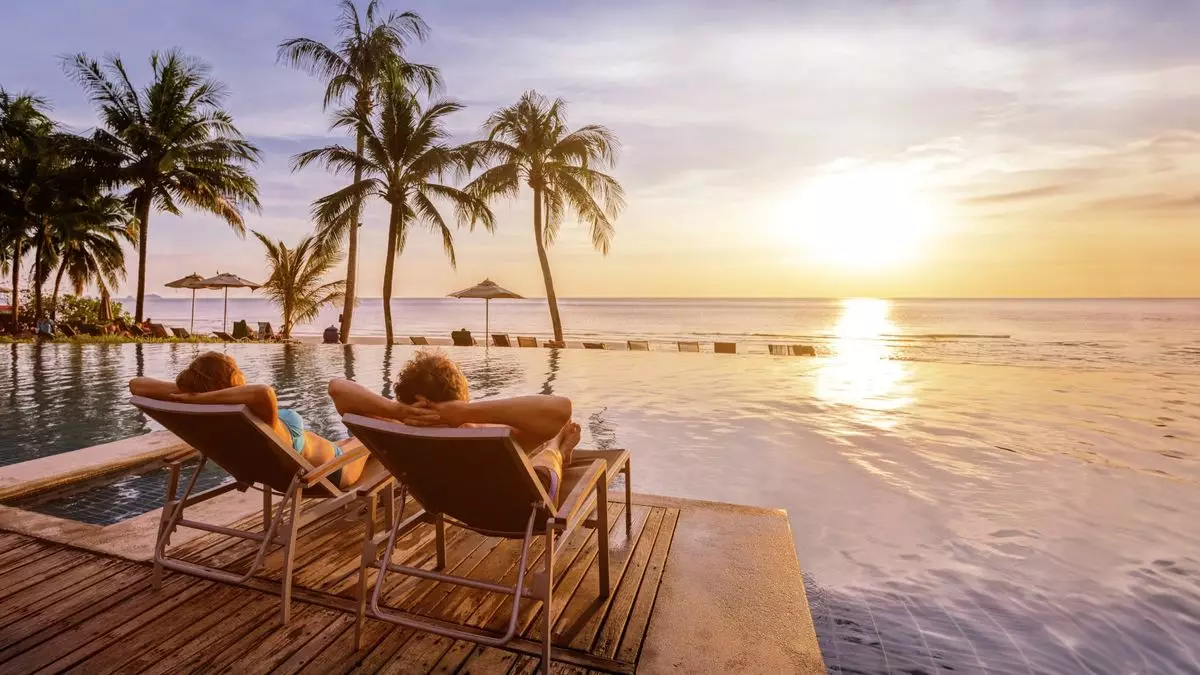As the luxury travel industry continues to thrive and expand, experts indicate that a shift may be on the horizon, particularly when it comes to pricing strategies among high-end hotels and luxury cruises. During a keynote address at the SmartFlyer Core conference in Lake Louise, Alberta, Clayton Reid—executive chairman and former CEO of MMGY—asserted that upward price trajectories may soon begin to level off, if not dip, for many luxury accommodations. “[I would not want to be an upper-level luxury hotel right now,]” Reid remarked, reflecting the uncertainties facing this elegantly niche market.
Despite a robust market boosted by pent-up demand post-pandemic, Reid’s insight signals that the affluent traveler segment could be experiencing a variety of economic pressures that may influence their spending habits regarding travel. His statements came during a time when luxury travel revenues, like those of SmartFlyer, reportedly hit a significant increase of 15% in 2024, with agents achieving impressive sales figures. Yet, as the market evolves, the sustainability of current pricing models must be reevaluated.
Data from hotel analytics firm CoStar underscores that while luxury hotel rates rose by a modest 1% in 2024, the average nightly rate stands at $388, representing a staggering 31% increase since pre-pandemic levels in 2019. This surge has resulted in a notable rise in hotels charging over $1,000 per night, leading to a substantial demographic shift among those seeking lavish accommodation options. As Reid indicates, this trend is even observable in other prestigious markets such as Italy and France, revealing a broader pattern that transcends geographic boundaries.
However, not all luxury establishments are experiencing the same dynamics. Properties that cater specifically to the ultra-wealthy, such as the exclusive Sheldon Chalet, which offers limited availability at exorbitant prices, continue to thrive unhindered. Such luxurious offerings seem to remain immune to general market fluctuations, as their elite clientele is more insulated from economic strains.
One of the significant factors shaping the luxury travel landscape is the shift in consumer behavioral trends driven by changing economic conditions. Reid points out that affluent travelers within large luxury brands, such as Four Seasons and Ritz-Carlton, may soon encounter limitations on their discretionary spending. With escalating credit card delinquency rates and record levels of credit card debt, there is a tangible indication that even higher-income brackets feel the pressure. As these economic realities set in, Reid suggests that a rethinking of price points may be necessary for hotels and travel providers looking to maintain their market positions.
Nevertheless, amidst this potential contraction, SmartFlyer executive leadership still conveys optimism, with early indications for 2025 pointing toward a buoyant business outlook. COO Erina Pindar described a strong sales picture, hinting at a paradox where advisory services might even become more valuable to discerning travelers. Recommendations on value-based travel options could help clients navigate upcoming price adjustments effectively.
Looking ahead, market experts forecast a gradual rise in revenue per available room (RevPAR) for U.S. luxury hotels, predicting increases of around 2.9% this year alone. Stalwarts of the luxury sector, including SmartFlyer, recognize that the expectation for steady growth year-over-year may also serve as a buffer against any creeping economic pressures. Yet, as Michael Holtz, SmartFlyer founder and CEO, poignantly noted, the new norm for high-end accommodations—where rooms costing $1,800 per night are becoming commonplace—could lead to a critical assessment among affluent travelers regarding their expenditure.
However, this pricing reality could paradoxically result in a stronger interest in the expertise of travel advisors who can provide insights into value-added opportunities that enhance the luxury travel experience. As Pindar articulately put it, the pandemic ignited a fundamental shift in travelers’ perceptions, embedding travel as an essential component of their existence—one that expands their worldview and cultivates personal growth.
While the luxury travel market has remained robust amid evolving economic conditions, a careful reassessment of pricing strategies is on the cusp of becoming necessary. With changing consumer behaviors and potential price compression on the horizon, the industry must adapt in order to retain its allure for high-end clientele who value not just luxury, but also pragmatic, value-driven experiences.

